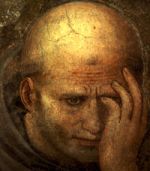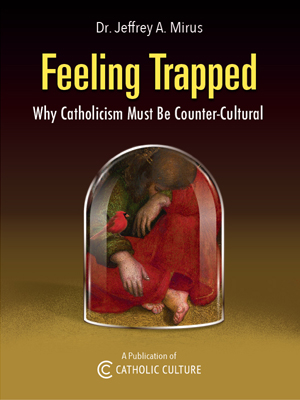Continuing in Austria: Modernist Abuse of Vatican II
By Dr. Jeff Mirus ( bio - articles - email ) | Nov 07, 2011
If you look at today’s report of new dissidence in Austria, you’ll see yet another example of the Modernist abuse of the Second Vatican Council. Hans Peter Hurka, the leader of the We Are Church movement there, claims his group will conduct liturgical ceremonies in which lay persons act as priests. He understands that this violates current Church law, but claims it is in accordance with the teachings of Vatican II.
Oh, really?
In several very explicit documents, Vatican II carefully delineated the most complete magisterial understanding in history of the role of bishops, of priests, and of the laity in the Church. These documents include in the first place the Council’s central text, often described as the very key to the Council, namely Lumen Gentium (Dogmatic Constitution on the Church). In addition there are three smaller and more particular decrees: Christus Dominus (Decree Concerning the Pastoral Office of Bishops in the Church), Presbyterorum Ordinis (Decree on the Ministry and Life of Priests), and Apostolicam Actuositatem (Decree on the Apostolate of the Laity).
Now nowhere in any of these documents will you find any confusion of the roles of bishops, priests and laity. Nor will you find any such confusion in Vatican II’s Constitution on the Sacred Liturgy, Sacrosanctum Concilium. With respect to the claims of the We Are Church movement, we would surely expect to find something in this document through which the Council fathers outlined the renewal of the liturgy, of which they stated: “the liturgy is the summit toward which the activity of the Church is directed; it is also the fount from which all her power flows” (10).
But instead, it was precisely here that the Council fathers called particular attention to the necessity of the priest:
To accomplish so great a work [i.e., the work of salvation] Christ is always present in his Church, especially in her liturgical celebrations. He is present in the Sacrifice of the Mass not only in the person of his minister, “the same now offering, through the ministry of priests, who formerly offered himself on the cross,” but especially in the Eucharistic species. (7)
Note those words: “the same now offering, through the ministry of priests, who formerly offered himself on the cross.”
How sad then that it has always been a hallmark of Modernism to seek to obliterate the distinction of roles among the various members of the Body of Christ! This, no doubt, puts Modernists in tune with the religious impulses of a democratic age, impulses they hope to rule through their own magisterium of academic expertise. In any case, we are too familiar with the long effort to push the laity into formal liturgical roles, as if this is normal to their state in life, and to reduce priests and bishops to the role of “presiders”, lest an authentic sacramental authority should hold sway.
Yet there is no warrant for this effort anywhere in the Council documents. The Decree on the Apostolate of the Laity makes it quite clear that the special province of the laity in the Lord’s work of evangelization and sanctification is “the penetrating and perfecting of the temporal order through the spirit of the Gospel” (2). And in direct contrast, the Decree on the Ministry and Life of Priests insists:
The same Lord, however, has established ministers among His faithful to unite them together in one body in which, “not all the members have the same function” (Rom. 12:4). These ministers in the society of the faithful are able by the sacred power of orders to offer sacrifice and to forgive sins, and they perform their priestly office publicly for men in the name of Christ. Therefore, having sent the apostles just as He Himself had been sent by the Father, Christ, through the apostles themselves, made their successors, the bishops, sharers in His consecration and mission. The office of their ministry has been handed down, in a lesser degree indeed, to the priests. Established in the order of the priesthood they can be co-workers of the episcopal order for the proper fulfillment of the apostolic mission entrusted to priests by Christ. (2)
Thus it is through the sacrament of Holy Orders that “priests, by the anointing of the Holy Spirit, are signed with a special character and are conformed to Christ the Priest in such a way that they can act in the person of Christ the Head” (2).
In point of fact, a layman cannot act in the person of Christ the Head to present again the atoning Sacrifice of Our Lord and Savior, or to confect the Eucharist so that we may all be fed on His Body and Blood. To seek to put lay persons into this role is to desire a final end to Christ’s sacrifice, and a definitive separation of the People of God from the very food which makes of us the Body of Christ. Such a desire is the direct opposite of what the Second Vatican Council sought—that same Council which understood the Church could do nothing without the ongoing liturgical action of Our Blessed Lord acting in and through His priests.
One can reread the documents to grow in faith and understanding—or perhaps just to give the lie to Hans Peter Hurka, which surely must in some parallel universe be almost as fine a motive. As a time-saver, I call to your attention the short essays I wrote last year on the documents of Vatican II, with extensive quotations. Those listed below address the portions of the documents cited here, and the entire set is available as an eBook, The Documents of the Second Vatican Council: A Summary and Guide.
In any case, we must all learn to recognize this Modernist tactic of claiming the Second Vatican Council as justification for the latest Modernist desires. For Modernists, Vatican II is never about what the Council fathers actually said, but only about what they “meant” or what they “would have said if they had not been afraid to say it” or what they “would certainly say now if they could meet again under our tutelage” (rather than that of the Holy Spirit). For Modernists, in fact, Vatican II is nothing but a metaphor, a filmy gauze of aspirations tending to confirm the worldly choices they have already made. For Modernists, then, Vatican II is in the end anything they might want it to be except a fixed text. Perhaps this explains, among many other things, why they never quote it.
For Reference:
- Vatican II on the Church: The Bishops
- Vatican II on Bishops: The Bishops Themselves
- Vatican II on Bishops: Episcopal Collaborators
- Vatican II on Priests: Priestly Ministry
- Vatican II on Priests: Priestly Life
- Vatican II on the Lay Apostolate: Mission
- Vatican II on the Lay Apostolate: Implementation
- The Documents of the Second Vatican Council: A Summary and Guide (eBook)
All comments are moderated. To lighten our editing burden, only current donors are allowed to Sound Off. If you are a current donor, log in to see the comment form; otherwise please support our work, and Sound Off!
-
Posted by: lynnvinc7142 -
Nov. 09, 2011 5:55 PM ET USA
Some 22 years ago I felt a strong calling to religious life. As a convert, I wasn't aware of 3rd orders, so it was almost painful. My husband was even afraid I would leave him & become a nun. But I used reason & understood I had made a vow of Holy Matrimony, so it couldn't be a call to such religious life. When I saw a notice for OCDS lay Carmelites & read about them, I then knew it was to that order I had been called...while remaining a faithful & loving wife...
-
Posted by: JimKcda -
Nov. 09, 2011 2:35 PM ET USA
I distinctly remember folks saying these very same things 40+ years ago. They (we) were called "right-wing extremists," "radicals," "traditionalists" and a variety of other not-so-nice names and driven out of our parishes. How much longer will it take to bring our Church back to Orthodoxy? Thankfully, the new liturgy will be a big step in the right direction. May God preserve BXVI's health and work of "reforming the reform" for many years to come, and bring all of us back to unity in the Church.








